Safety first! The Nokia XR21 aims to be a smartphone that emphasizes sustainability and a long battery life. Not only is it water, dust, and shock proof, but it is also provided with updates for a long time and even gets an expanded warranty. Find out in our test, whether the XR21 keeps its promises.
Daniel Schmidt, 👁 Daniel Schmidt (translated by Mark Riege), Published 06/22/2023 🇩🇪
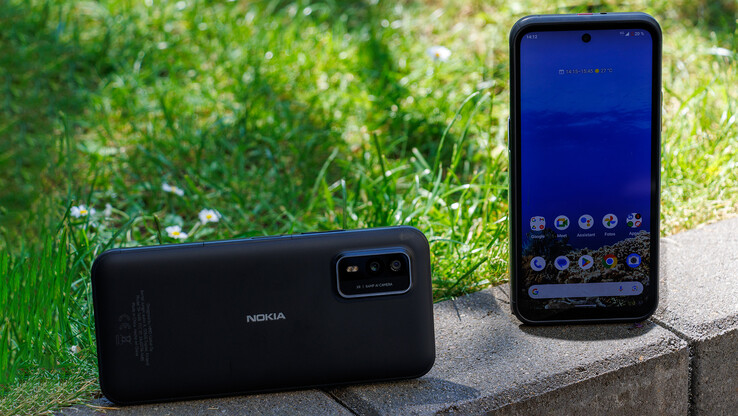
The Nokia XR21 from HMD Global is the direct successor to the Nokia XR20. The manufacturer keeps the same design concept, aiming to offer a particularly robust and long-lasting smartphone to the customers, without getting as bulky as classic rugged smartphones.
This already worked really well last year, and HMD has improved the XR21 in many areas, particularly its robustness. The battery capacity has increased, the refresh rate is higher, there is a new camera, and a more current SoC is also included. To make up for this, the MSRP has increased by 20 Euros (~$22) to 599 Euros (~$656), and the more affordable entry-level model with reduced storage is not available anymore.
Display
6.49 inch 20:9, 2400 x 1080 pixel 406 PPI, capacitive, TFT-LCD, Corning Gorilla Glass Victus, glossy: yes, 120 Hz
Storage
128 GB UFS 2.2 Flash, 128 GB
, 114 GB free
Connections
1 USB 2.0, USB-C Power Delivery (PD), Audio Connections: 3.5 mm audio port, USB-C, 1 Fingerprint Reader, NFC, Brightness Sensor, Sensors: barometer, G-sensor, eCompass, gyroscope, proximity sensor
Networking
802.11 a/b/g/n/ac/ax (a/b/g/n=Wi-Fi 4/ac=Wi-Fi 5/ax=Wi-Fi 6/), Bluetooth 5.1, 2G (850, 900, 1800, 1900 MHz), 3G (Band 1, 2, 4, 5, 8), LTE (Band 1, 2, 3, 4, 5, 7, 8, 12, 17, 13, 20, 25, 26, 28, 32, 38, 39, 40, 41, 42, 43, 48, 66, 71), 5G-Sub6 (Band 1, 2, 3, 5, 7, 20, 25, 28, 40, 41, 66, 71, 77, 78, 79), Dual SIM, LTE, 5G
Size
height x width x depth (in mm): 10.45 x 168 x 78.58 (=0.41 x 6.61 x 3.09 in)
Battery
4800 mAh Lithium-Ion, QC 3.0, PD 2.0
Charging
fast charging / Quickcharge
Operating System
Android 12
Camera
Primary Camera: 64 MPix (OV64B40, f/1.8) + 8 MPix (ultra wide, OV08D10, f/2.2); Camera2 API: Level 3
Secondary Camera: 16 MPix (OC16A1Q, fixfocus, f/2.5)
Additional features
Speakers: dual, Keyboard: onscreen, USB cable, SIM tool, 36 Months Warranty, DRM Widevine L1, GNSS: GPS (L1, L5); Galileo (E1, E5a), GLONASS (L1), Beidou (B1, B1C, B2a), QZSS (L1, L5) ,NavIC (L5), two configurable buttons, impact protected polycarbonate, impact absorbing TPU bumpers, IP68/IP69K, fanless, ruggedized, waterproof
Weight
231 g (= 8.15 oz / 0.51 pounds) (= 0 oz / 0 pounds)
Note: The manufacturer may use components from different suppliers including display panels, drives or memory sticks with similar specifications.
Rating
Date
Model
Weight
Drive
Size
Resolution
Best Price
82.3 %
06/2023
Nokia XR21
SD 695 5G, Adreno 619231 g128 GB UFS 2.2 Flash6.49″2400×108082.6 %
12/2022
Gigaset GX6
Dimensity 900, Mali-G68 MP4278 g128 GB UFS 2.1 Flash6.60″2412×108081.9 %
08/2022
Samsung Galaxy XCover 6 Pro
SD 778G 5G, Adreno 642L235 g128 GB UFS 2.2 Flash6.60″2408×108088.5 %
11/2022
Google Pixel 7
Tensor G2, Mali-G710 MP7197 g128 GB UFS 3.1 Flash6.30″2400×108079.7 %
05/2023
CAT S75
Dimensity 930, IMG BXM-8-256268 g128 GB UFS 2.2 Flash6.58″2408×1080
The Nokia XR21 is available in the colors Midnight Black and Pine Green. At a thickness of 10.45 mm (~0.41 in), it definitely is not a slim smartphone, but it is still slimmer than a classic rugged phone such as the CAT S75 and especially also noticeably lighter. However, the design still looks a bit aged, with the rather mediocre display-to-surface ratio of 77% also contributing to this impression.
The rubberized smartphone corners aren’t very visible, but you can still feel them. HMD Global calls them dampening TPU shocks. The back is made of shock resistant polycarbonate, and the front is protected by Corning Gorilla Glass Victus. The Nokia XR21 leaves a high-quality and particularly robust impression, presenting itself with clean workmanship.
The smartphone is not only dust and waterproof according to IP68 but also offers an IP69K certification, allowing it to withstand a water stream with a pressure of 100 bars. Drops from a height of 1.8 meters (~5.9 ft) won’t create any problems for the XR21. According to the MIL-STD-810H standard, it is certified against drops from a height of 1.5 meters (~4.9 ft) and can be used in temperatures between -20 and +55 °C (-4 to 131 °F). It can also be operated with wet hands or gloves.
The case of the Nokia XR21 is made of 100% recycled aluminum, and HMD Global also makes a short environment impact profile of the smartphone available.
CAT S75 Gigaset GX6 Nokia XR20 Samsung Galaxy XCover 6 Pro Nokia XR21 Google Pixel 7 DIN A6 ❌
171 mm / 6.73 inch
80 mm / 3.15 inch
11.9 mm / 0.4685 inch
268 g0.591 lbs170.7 mm / 6.72 inch
82.2 mm / 3.24 inch
11.9 mm / 0.4685 inch
278 g0.613 lbs171.6 mm / 6.76 inch
81.5 mm / 3.21 inch
10.6 mm / 0.4173 inch
248 g0.547 lbs168.8 mm / 6.65 inch
79.9 mm / 3.15 inch
9.9 mm / 0.3898 inch
235 g0.518 lbs168 mm / 6.61 inch
78.58 mm / 3.09 inch
10.45 mm / 0.4114 inch
231 g0.509 lbs155.6 mm / 6.13 inch
73.2 mm / 2.88 inch
8.7 mm / 0.3425 inch
197 g0.4343 lbs148 mm / 5.83 inch
105 mm / 4.13 inch
1 mm / 0.03937 inch
1.5 g0.00331 lbs
In contrast to the XR20, the Nokia XR21 only offers a USB-2.0 port without giving the option for storage expansion via microSD card.
But at least, the audio port remains. Since connected headphones also serve as an antenna, the port is also necessary to operate the analog radio receiver. In addition, Bluetooth 5.1, NFC, and two quick access keys are also available.
The Nokia XR21 is still delivered with Google Android 12, which is kept very purely. But there are also several third-party apps preinstalled, which can all be uninstalled. HMD Global promises three large updates for the XR21 and monthly security patches for four years, starting from the global market introduction. While this initially sounds good, unfortunately the XR21 isn’t delivered directly with Android 13, although version 14 is already in the starting blocks and the predecessor has even received the update already last year. In addition, the plan to distribute the security patches monthly is already not working, since at the time of this test, our test unit is still at the level of March 5, 2023.
The Nokia XR21 supports all the current mobile communication standards including 5G-Sub6, offering an extensive amount of frequency bands, so that it should be able to create a connection without any trouble in most parts of the world. The communication characteristics are good in the city environment during our test.
Nominally, the XR21 supports Wi-Fi 6 just like last year’s model. However, in the test with our Asus ROG Rapture GT-AXE11000 reference router, the transfer speeds turn out surprisingly low, even though they remain stable. The speeds are at the level of a rather mediocre ac WLAN. Although the speed was already not outstanding in the XR20, it was still significantly higher. Probably HMD Global will still make some improvements in this regard.
iperf3 receive AXE11000
346 (min: 320) MBit/s ∼38%
iperf3 transmit AXE11000
360 (min: 326) MBit/s ∼38%
iperf3 transmit AXE11000 6GHz
892 MBit/s ∼52%
iperf3 receive AXE11000 6GHz
743 MBit/s ∼42%
iperf3 transmit AXE11000 6GHz
944 (min: 866) MBit/s ∼55%
iperf3 receive AXE11000 6GHz
910 (min: 677) MBit/s ∼52%
iperf3 receive AXE11000
904 (min: 816) MBit/s ∼100%
iperf3 transmit AXE11000
936 (min: 863) MBit/s ∼100%
iperf3 transmit AXE11000 6GHz
1716 (min: 845) MBit/s ∼100%
iperf3 receive AXE11000 6GHz
1757 (min: 1694) MBit/s ∼100%
iperf3 receive AXE11000
345 (min: 331) MBit/s ∼38%
iperf3 transmit AXE11000
372 (min: 353) MBit/s ∼40%
iperf3 transmit AX12
630 (min: 561) MBit/s ∼100%
iperf3 receive AX12
649 (min: 589) MBit/s ∼100%
iperf3 receive AXE11000
627 (min: 34.8) MBit/s ∼69%
iperf3 transmit AXE11000
663 (min: 40.5) MBit/s ∼71%
iperf3 transmit AXE11000 6GHz
1473 (min: 229) MBit/s ∼86%
iperf3 receive AXE11000 6GHz
1353 (min: 598) MBit/s ∼77%
iperf3 transmit AX12
528 (min: 16.9) MBit/s ∼84%
iperf3 receive AX12
499 (min: 32.7) MBit/s ∼77%
03570105140175210245280315350385420455490525560595630665Tooltip
Nokia XR21 Qualcomm Snapdragon 695 5G, Qualcomm Adreno 619; iperf3 receive AXE11000; iperf 3.1.3: Ø346 (320-352)
Nokia XR20 Qualcomm Snapdragon 480 5G, Qualcomm Adreno 619; iperf3 receive AX12; iperf 3.1.3: Ø648 (589-673)
Nokia XR21 Qualcomm Snapdragon 695 5G, Qualcomm Adreno 619; iperf3 transmit AXE11000; iperf 3.1.3: Ø360 (326-373)
Nokia XR20 Qualcomm Snapdragon 480 5G, Qualcomm Adreno 619; iperf3 transmit AX12; iperf 3.1.3: Ø630 (561-645)
The Nokia XR21 is able to use all global satellite networks and can even create a connection indoors. Even though the latter takes more time, it still finds a fairly accurate location within several seconds. As expected, this works much faster and is more accurate outdoors.
We compare the smartphone with a Garmin Venu 2 on a short bike ride. The difference in the recorded route is 60 meters (~197 ft) over an almost 10 km (~6,2 miles) total route, but XR21 reported a significantly higher amount of altitude traversed. The route recording is fairly accurate in the detail view, allowing us to attest the Nokia smartphone with good locating capabilities.
The Nokia XR21 offers full dual-SIM support, either with two physical Nano-SIM cards or alternatively, you can also replace one of them with an eSIM. Other functions such as VoLTE and WLAN calls are also supported.
The voice quality is decent. In quiet surroundings, both conversation partners are easy to understand, sounding natural with a low amount of noise. Minor noise interference is filtered out. In speaker mode, we hear some slight accompanying crackling noise, and the microphones record spoken words only quietly.
 Selfie with the XR21 (Portrait mode)
Selfie with the XR21 (Portrait mode)
The front camera of the Nokia XR21 has a 16-MP resolution, but since it uses pixel binning, the resulting pictures have a resolution of only 4.1 MP. The pictures are fairly decent and able to impress with an attractive image composition. But the sharpness could have turned out a bit higher. Videos are only recorded in Full HD at 30 FPS, and fast movements can also result in some visible streaking.
The dual-camera system in the back uses a main sensor with a 64-MP resolution. Unfortunately, it doesn’t offer optical image stabilization (OIS). The images are characterized by a very natural color representation but in some places a bit dark. Although many details are lost in low light conditions, the resulting pictures are still decent with the objects still easily recognizable. You can only zoom digitally (8x max). The quality is okay up to a 2x zoom level, but at higher levels the results are hardly usable. The ultrawide angle offers a lower resolution than that of the XR20 but still does a decent job. The depth sharpness is okay, but the images could also be slightly brighter here.
The Nokia XR21 also offers a Pro mode including RAW support. The full 64-MP resolution of the main sensor can also be used. Videos can be recorded in 1,080p (16:9) at 30 or 60 FPS at best. The electronic image stabilization works fairly well, but unfortunately the autofocus refocuses from time to time. Using cinema mode, you can also record videos in 21:9 format at 24 FPS, with the user having the choice of recording at either 20 or 50 Mbps. Thanks to OZO audio, voices are recorded fairly clearly.
Image Comparison
Choose a scene and navigate within the first image. One click changes the position on touchscreens. One click on the zoomed-in image opens the original in a new window. The first image shows the scaled photograph of the test device.
HauptkameraHauptkameraUltraweitwinkel5-facher ZoomLow-Light

click to load images
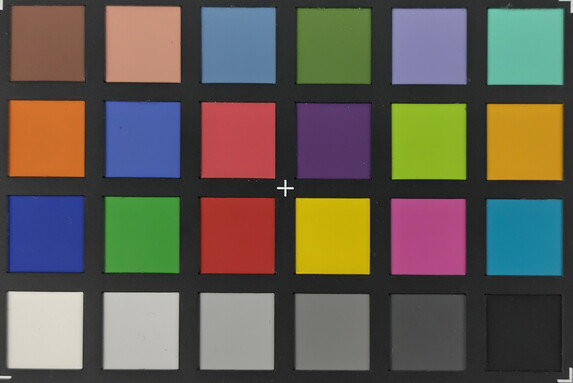
4.8 ∆E
2.3 ∆E
3.5 ∆E
8.1 ∆E
2.1 ∆E
1.1 ∆E
5.4 ∆E
2.2 ∆E
5.7 ∆E
2.4 ∆E
3.6 ∆E
5.7 ∆E
2.3 ∆E
2.9 ∆E
4.3 ∆E
6.6 ∆E
4.4 ∆E
1.5 ∆E
8.2 ∆E
4.2 ∆E
2.4 ∆E
2.5 ∆E
2.6 ∆E
4.5 ∆E
ColorChecker Nokia XR21: 3.89 ∆E min: 1.13 – max: 8.25 ∆E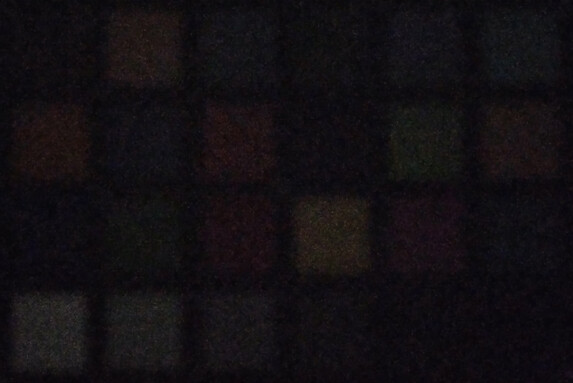
27.9 ∆E
49.8 ∆E
36.8 ∆E
34 ∆E
41.7 ∆E
59.8 ∆E
50.3 ∆E
32.7 ∆E
38.6 ∆E
25.8 ∆E
61.5 ∆E
62.4 ∆E
28.8 ∆E
45.9 ∆E
34.3 ∆E
71.7 ∆E
40 ∆E
43.3 ∆E
79.2 ∆E
67.8 ∆E
49.6 ∆E
35 ∆E
22.3 ∆E
12.6 ∆E
ColorChecker Nokia XR21: 43.83 ∆E min: 12.64 – max: 79.22 ∆E
The box of the Nokia XR21 only includes a USB cable and a SIM tool. A corresponding charger is not included, but HMD Global optionally offers one for around 35 Euros (~$38).
The XR21 has a 36-month warranty and a one-year warranty for replacing a defective display.
The capacitive touchscreen of the Nokia XR21 recognizes up to ten touch points simultaneously, implementing the commands quickly and accurately. The sliding characteristics of the glass surface are very good. The ERM vibration motor is powerful enough to be easily noticeable, but it has a rather spongy feedback.
The XR21 offers two quick access keys: one on top and another on the left side of the frame. Both can be configured individually and occupied with either system elements, apps, or an emergency function. The keys can distinguish a short or long press, allowing you to assign two functions to each of the keys.
A fingerprint sensor integrated into the power button is available for biometric security. While its speed is fairly decent, the recognition rates are rather average. Additionally or alternatively, you can also configure less secure face recognition using the front camera, which works very quickly and reliably. The user’s face is still recognized in the dark, since the smartphone increases the brightness of the panel for this purpose.
![]() Subpixel grid
Subpixel grid
The LCD display of the Nokia XR21 has shrunk to 6.49 inches and offers a high pixel density at Full HD+. The refresh rate can be adjusted by the system, switching between 60 and 120 Hz automatically in this case. You can also set it directly to 60 Hz. Nominally, the panel supports the HDR standards HLG and HDR10, but this might be rather questionable due to the low brightness.
HMD Global specifies the brightness in sunlight at up to 550 Nits. We reach a maximum of 503 cd/m2 in our measurements with the brightness sensor remaining deactivated. When we activate it, we are only able to get a maximum of 495 cd/m2 from the smartphone. At 0.45 cd/m2, the black value is decent, resulting in a high contrast ratio of 1,118:1.
The advantage of an LCD is that pulse width modulation (PWM) isn’t used to control the brightness. Using our oscilloscope, we only see a high-frequency flickering, but this shouldn’t create any problems for even very sensitive users.
494
cd/m²494
cd/m²495
cd/m²487
cd/m²503
cd/m²483
cd/m²481
cd/m²475
cd/m²474
cd/m²
Distribution of brightness
X-Rite i1Pro 3
Maximum: 503 cd/m² (Nits) Average: 487.3 cd/m² Minimum: 1.8 cd/m²
Brightness Distribution: 94 %
Center on Battery: 503 cd/m²
Contrast: 1118:1 (Black: 0.45 cd/m²)
ΔE Color 2.4 | 0.55-29.43 Ø5.1
ΔE Greyscale 1.9 | 0.57-98 Ø5.4
99.5% sRGB (Calman 2D)
Gamma: 2.22
Nokia XR21
TFT-LCD, 2400×1080, 6.49Gigaset GX6
IPS, 2412×1080, 6.60Samsung Galaxy XCover 6 Pro
PLS, 2408×1080, 6.60Google Pixel 7
OLED, 2400×1080, 6.30CAT S75
IPS LCD, 2408×1080, 6.58Nokia XR20
IPS, 2400×1080, 6.67Brightness middle
503
505
0%
510
1%
936
86%
566
13%
599
19%
Brightness
487
491
1%
495
2%
947
94%
529
9%
598
23%
Brightness Distribution
94
93
-1%
92
-2%
95
1%
83
-12%
99
5%
Black Level *
0.45
0.3
33%
0.46
-2%
0.47
-4%
0.33
27%
Contrast
1118
1683
51%
1109
-1%
1204
8%
1815
62%
Colorchecker dE 2000 *
2.4
4.32
-80%
7.41
-209%
1.3
46%
5.02
-109%
4.52
-88%
Colorchecker dE 2000 max. *
6.6
7.22
-9%
13.26
-101%
2.7
59%
9.6
-45%
7.6
-15%
Greyscale dE 2000 *
1.9
3
-58%
10.6
-458%
1.4
26%
4.4
-132%
4.2
-121%
Gamma
2.22 99%
2.268 97%
2.518 87%
2.25 98%
2.248 98%
2.279 97%
CCT
6602 98%
7098 92%
10050 65%
6664 98%
7173 91%
7309 89%
* … smaller is better
Screen Flickering / PWM (Pulse-Width Modulation)
ℹ
To dim the screen, some notebooks will simply cycle the backlight on and off in rapid succession – a method called Pulse Width Modulation (PWM) . This cycling frequency should ideally be undetectable to the human eye. If said frequency is too low, users with sensitive eyes may experience strain or headaches or even notice the flickering altogether.
Screen flickering / PWM detected 55100 Hz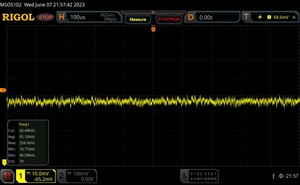
The display backlight flickers at 55100 Hz (Likely utilizing PWM) .
The frequency of 55100 Hz is quite high, so most users sensitive to PWM should not notice any flickering.
In comparison: 53 % of all tested devices do not use PWM to dim the display. If PWM was detected, an average of 19024 (minimum: 5 – maximum: 3846000) Hz was measured.
The color reproduction of the display cannot be adjusted by the user, so we were very surprised that the white balance is at a very good level. Even though the color calibration isn’t quite as exact and successful, it is still at a good level.
Display Response Times
ℹ
Display response times show how fast the screen is able to change from one color to the next. Slow response times can lead to afterimages and can cause moving objects to appear blurry (ghosting). Gamers of fast-paced 3D titles should pay special attention to fast response times.
The brightness sensor responds a bit sluggishly to changing light conditions, but this can be tolerated. Unfortunately, the maximum brightness isn’t particularly high, so that you can hardly see anything on the display in bright sunlight.
In terms of the colors, the viewing angle stability of the LCD is very good. Even from very steep viewing angles, there are hardly any color inversions, but the brightness drops sharply. In the dark, there are neither any noticeable ghosting effects nor halos.
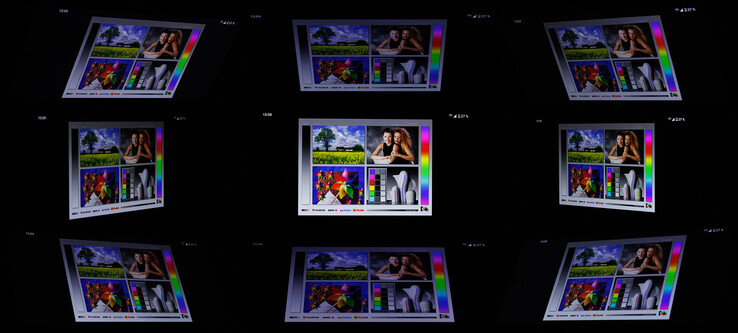 Viewing angle stability of the Nokia XR21
Viewing angle stability of the Nokia XR21
The Nokia XR21 is run by a Snapdragon 695 5G with 6 GB of working memory. In terms of its performance, the SoC is positioned in the lower midrange, enabling an attractive system performance.
In the benchmarks, the SoC performs at the expected level, placing almost at the same level as the Dimensity 900 in the Gigaset GX6 in terms of the CPU speed. But it has no chance against the Snapdragon 778G from the XCover 6 Pro.
Google Pixel 7
Google Tensor G2, Mali-G710 MP7, 8192
1050 Points ∼100% +56%
Average of class Smartphone
(119 – 1885, n=237, last 2 years)
829 Points ∼79% +23%
Samsung Galaxy XCover 6 Pro
Qualcomm Snapdragon 778G 5G, Adreno 642L, 6144
773 Points ∼74% +15%
Gigaset GX6
MediaTek Dimensity 900, Mali-G68 MP4, 6144
693 Points ∼66% +3%
Average Qualcomm Snapdragon 695 5G
(659 – 697, n=18)
677 Points ∼64% +1%
Nokia XR21
Qualcomm Snapdragon 695 5G, Adreno 619, 6144
673 Points ∼64%
CAT S75
MediaTek Dimensity 930, IMG BXM-8-256, 6144
641 Points ∼61% -5%
Nokia XR20
Qualcomm Snapdragon 480 5G, Adreno 619, 6144
504 Points ∼48% -25%
Google Pixel 7
Google Tensor G2, Mali-G710 MP7, 8192
3265 Points ∼100% +70%
Samsung Galaxy XCover 6 Pro
Qualcomm Snapdragon 778G 5G, Adreno 642L, 6144
2802 Points ∼86% +46%
Average of class Smartphone
(473 – 5538, n=237, last 2 years)
2657 Points ∼81% +38%
Gigaset GX6
MediaTek Dimensity 900, Mali-G68 MP4, 6144
2095 Points ∼64% +9%
Nokia XR21
Qualcomm Snapdragon 695 5G, Adreno 619, 6144
1923 Points ∼59%
Average Qualcomm Snapdragon 695 5G
(1663 – 2038, n=18)
1918 Points ∼59% 0%
CAT S75
MediaTek Dimensity 930, IMG BXM-8-256, 6144
1787 Points ∼55% -7%
Nokia XR20
Qualcomm Snapdragon 480 5G, Adreno 619, 6144
1662 Points ∼51% -14%
Average of class Smartphone
(893 – 1806, n=6, last 2 years)
1293 Points ∼100% +43%
Nokia XR21
Qualcomm Snapdragon 695 5G, Adreno 619, 6144
903 Points ∼70%
Average Qualcomm Snapdragon 695 5G
(893 – 903, n=2)
898 Points ∼69% -1%
Average of class Smartphone
(2064 – 4656, n=6, last 2 years)
3109 Points ∼100% +51%
Nokia XR21
Qualcomm Snapdragon 695 5G, Adreno 619, 6144
2064 Points ∼66%
Average Qualcomm Snapdragon 695 5G
(2064 – 2064, n=2)
2064 Points ∼66% 0%
Average of class Smartphone
(188 – 2531, n=42, last 2 years)
1284 Points ∼100%
Average Qualcomm Snapdragon 695 5G
(888 – 898, n=2)
893 Points ∼70%
CAT S75
MediaTek Dimensity 930, IMG BXM-8-256, 6144
832 Points ∼65%
Average of class Smartphone
(512 – 6460, n=42, last 2 years)
3426 Points ∼100%
CAT S75
MediaTek Dimensity 930, IMG BXM-8-256, 6144
1998 Points ∼58%
Average Qualcomm Snapdragon 695 5G
(1918 – 2067, n=2)
1993 Points ∼58%
Google Pixel 7
Google Tensor G2, Mali-G710 MP7, 8192
773655 Points ∼100% +109%
Average of class Smartphone
(111952 – 1322448, n=164, last 2 years)
660692 Points ∼85% +79%
Samsung Galaxy XCover 6 Pro
Qualcomm Snapdragon 778G 5G, Adreno 642L, 6144
505982 Points ∼65% +37%
CAT S75
MediaTek Dimensity 930, IMG BXM-8-256, 6144
394141 Points ∼51% +7%
Average Qualcomm Snapdragon 695 5G
(344344 – 409358, n=13)
389336 Points ∼50% +5%
Nokia XR21
Qualcomm Snapdragon 695 5G, Adreno 619, 6144
369861 Points ∼48%
Nokia XR20
Qualcomm Snapdragon 480 5G, Adreno 619, 6144
322933 Points ∼42% -13%
CAT S75
MediaTek Dimensity 930, IMG BXM-8-256, 6144
28378 Points ∼100% +209%
Gigaset GX6
MediaTek Dimensity 900, Mali-G68 MP4, 6144
12444 Points ∼44% +36%
Samsung Galaxy XCover 6 Pro
Qualcomm Snapdragon 778G 5G, Adreno 642L, 6144
12113 Points ∼43% +32%
Average of class Smartphone
(4780 – 28378, n=225, last 2 years)
10720 Points ∼38% +17%
Google Pixel 7
Google Tensor G2, Mali-G710 MP7, 8192
10530 Points ∼37% +15%
Average Qualcomm Snapdragon 695 5G
(6897 – 10834, n=17)
9405 Points ∼33% +2%
Nokia XR21
Qualcomm Snapdragon 695 5G, Adreno 619, 6144
9180 Points ∼32%
Nokia XR20
Qualcomm Snapdragon 480 5G, Adreno 619, 6144
7090 Points ∼25% -23%
Google Pixel 7
Google Tensor G2, Mali-G710 MP7, 8192
6247 Points ∼100% +72%
Average of class Smartphone
(411 – 9585, n=164, last 2 years)
5137 Points ∼82% +41%
Samsung Galaxy XCover 6 Pro
Qualcomm Snapdragon 778G 5G, Adreno 642L, 6144
4079 Points ∼65% +12%
Nokia XR21
Qualcomm Snapdragon 695 5G, Adreno 619, 6144
3642 Points ∼58%
Average Qualcomm Snapdragon 695 5G
(3171 – 3848, n=14)
3634 Points ∼58% 0%
CAT S75
MediaTek Dimensity 930, IMG BXM-8-256, 6144
3527 Points ∼56% -3%
Nokia XR20
Qualcomm Snapdragon 480 5G, Adreno 619, 6144
3265 Points ∼52% -10%
Google Pixel 7
Google Tensor G2, Mali-G710 MP7, 8192
9601 Points ∼100% +20%
Average of class Smartphone
(2565 – 19657, n=164, last 2 years)
8894 Points ∼93% +11%
Samsung Galaxy XCover 6 Pro
Qualcomm Snapdragon 778G 5G, Adreno 642L, 6144
8858 Points ∼92% +11%
Nokia XR21
Qualcomm Snapdragon 695 5G, Adreno 619, 6144
7987 Points ∼83%
Average Qualcomm Snapdragon 695 5G
(6789 – 8072, n=14)
7708 Points ∼80% -3%
CAT S75
MediaTek Dimensity 930, IMG BXM-8-256, 6144
6635 Points ∼69% -17%
Nokia XR20
Qualcomm Snapdragon 480 5G, Adreno 619, 6144
6296 Points ∼66% -21%
Average of class Smartphone
(670 – 11617, n=164, last 2 years)
5636 Points ∼100% +38%
Google Pixel 7
Google Tensor G2, Mali-G710 MP7, 8192
5392 Points ∼96% +32%
CAT S75
MediaTek Dimensity 930, IMG BXM-8-256, 6144
4352 Points ∼77% +6%
Average Qualcomm Snapdragon 695 5G
(3167 – 4836, n=14)
4278 Points ∼76% +4%
Nokia XR21
Qualcomm Snapdragon 695 5G, Adreno 619, 6144
4094 Points ∼73%
Samsung Galaxy XCover 6 Pro
Qualcomm Snapdragon 778G 5G, Adreno 642L, 6144
3988 Points ∼71% -3%
Nokia XR20
Qualcomm Snapdragon 480 5G, Adreno 619, 6144
3847 Points ∼68% -6%
Google Pixel 7
Google Tensor G2, Mali-G710 MP7, 8192
16001 Points ∼100% +269%
Average of class Smartphone
(697 – 30125, n=164, last 2 years)
11228 Points ∼70% +159%
Samsung Galaxy XCover 6 Pro
Qualcomm Snapdragon 778G 5G, Adreno 642L, 6144
6594 Points ∼41% +52%
Nokia XR21
Qualcomm Snapdragon 695 5G, Adreno 619, 6144
4339 Points ∼27%
Average Qualcomm Snapdragon 695 5G
(3975 – 4426, n=14)
4330 Points ∼27% 0%
CAT S75
MediaTek Dimensity 930, IMG BXM-8-256, 6144
4298 Points ∼27% -1%
Nokia XR20
Qualcomm Snapdragon 480 5G, Adreno 619, 6144
3765 Points ∼24% -13%
Google Pixel 7
Google Tensor G2, Mali-G710 MP7, 8192
1838 Points ∼100% +48%
Average of class Smartphone
(10 – 2392, n=164, last 2 years)
1446 Points ∼79% +17%
CAT S75
MediaTek Dimensity 930, IMG BXM-8-256, 6144
1276 Points ∼69% +3%
Nokia XR20
Qualcomm Snapdragon 480 5G, Adreno 619, 6144
1247 Points ∼68% +1%
Nokia XR21
Qualcomm Snapdragon 695 5G, Adreno 619, 6144
1239 Points ∼67%
Average Qualcomm Snapdragon 695 5G
(1078 – 1382, n=14)
1224 Points ∼67% -1%
Samsung Galaxy XCover 6 Pro
Qualcomm Snapdragon 778G 5G, Adreno 642L, 6144
1188 Points ∼65% -4%
The Adreno 619 is already an old hat, and unfortunately this is also noticeable in the benchmarks, with the Nokia XR21 placing more at the lower end of the comparison field in the GPU benchmarks.
Google Pixel 7
Mali-G710 MP7, Tensor G2, 128 GB UFS 3.1 Flash
1800 Points ∼100% +408%
Samsung Galaxy XCover 6 Pro
Adreno 642L, SD 778G 5G, 128 GB UFS 2.2 Flash
684 Points ∼38% +93%
Gigaset GX6
Mali-G68 MP4, Dimensity 900, 128 GB UFS 2.1 Flash
594 Points ∼33% +68%
Nokia XR21
Adreno 619, SD 695 5G, 128 GB UFS 2.2 Flash
354 Points ∼20%
Nokia XR20
Adreno 619, SD 480, 128 GB UFS 2.1 Flash
287 Points ∼16% -19%
Google Pixel 7
Mali-G710 MP7, Tensor G2, 128 GB UFS 3.1 Flash
1841 Points ∼100% +409%
Samsung Galaxy XCover 6 Pro
Adreno 642L, SD 778G 5G, 128 GB UFS 2.2 Flash
686 Points ∼37% +90%
Gigaset GX6
Mali-G68 MP4, Dimensity 900, 128 GB UFS 2.1 Flash
607 Points ∼33% +68%
Nokia XR21
Adreno 619, SD 695 5G, 128 GB UFS 2.2 Flash
362 Points ∼20%
Nokia XR20
Adreno 619, SD 480, 128 GB UFS 2.1 Flash
294 Points ∼16% -19%
Google Pixel 7
Mali-G710 MP7, Tensor G2, 128 GB UFS 3.1 Flash
6660 Points ∼100% +451%
Samsung Galaxy XCover 6 Pro
Adreno 642L, SD 778G 5G, 128 GB UFS 2.2 Flash
2472 Points ∼37% +105%
Gigaset GX6
Mali-G68 MP4, Dimensity 900, 128 GB UFS 2.1 Flash
2167 Points ∼33% +79%
Nokia XR21
Adreno 619, SD 695 5G, 128 GB UFS 2.2 Flash
1208 Points ∼18%
Nokia XR20
Adreno 619, SD 480, 128 GB UFS 2.1 Flash
977 Points ∼15% -19%
Google Pixel 7
Mali-G710 MP7, Tensor G2, 128 GB UFS 3.1 Flash
6513 Points ∼100% +437%
Samsung Galaxy XCover 6 Pro
Adreno 642L, SD 778G 5G, 128 GB UFS 2.2 Flash
2464 Points ∼38% +103%
Gigaset GX6
Mali-G68 MP4, Dimensity 900, 128 GB UFS 2.1 Flash
2179 Points ∼33% +80%
Nokia XR21
Adreno 619, SD 695 5G, 128 GB UFS 2.2 Flash
1212 Points ∼19%
Nokia XR20
Adreno 619, SD 480, 128 GB UFS 2.1 Flash
980 Points ∼15% -19%
CAT S75
IMG BXM-8-256, Dimensity 930, 128 GB UFS 2.2 Flash
Points ∼0% -100%
Gigaset GX6
Mali-G68 MP4, Dimensity 900, 128 GB UFS 2.1 FlashCAT S75
IMG BXM-8-256, Dimensity 930, 128 GB UFS 2.2 FlashNokia XR20
Adreno 619, SD 480, 128 GB UFS 2.1 FlashGigaset GX6
Mali-G68 MP4, Dimensity 900, 128 GB UFS 2.1 FlashCAT S75
IMG BXM-8-256, Dimensity 930, 128 GB UFS 2.2 FlashNokia XR20
Adreno 619, SD 480, 128 GB UFS 2.1 FlashGigaset GX6
Mali-G68 MP4, Dimensity 900, 128 GB UFS 2.1 FlashCAT S75
IMG BXM-8-256, Dimensity 930, 128 GB UFS 2.2 FlashNokia XR20
Adreno 619, SD 480, 128 GB UFS 2.1 FlashGoogle Pixel 7
Mali-G710 MP7, Tensor G2, 128 GB UFS 3.1 FlashGigaset GX6
Mali-G68 MP4, Dimensity 900, 128 GB UFS 2.1 FlashNokia XR21
Adreno 619, SD 695 5G, 128 GB UFS 2.2 FlashNokia XR20
Adreno 619, SD 480, 128 GB UFS 2.1 FlashGoogle Pixel 7
Mali-G710 MP7, Tensor G2, 128 GB UFS 3.1 FlashGigaset GX6
Mali-G68 MP4, Dimensity 900, 128 GB UFS 2.1 FlashNokia XR21
Adreno 619, SD 695 5G, 128 GB UFS 2.2 FlashNokia XR20
Adreno 619, SD 480, 128 GB UFS 2.1 FlashGoogle Pixel 7
Mali-G710 MP7, Tensor G2, 128 GB UFS 3.1 Flash
8192 Points ∼100% +166%
Gigaset GX6
Mali-G68 MP4, Dimensity 900, 128 GB UFS 2.1 Flash
4173 Points ∼51% +35%
Nokia XR21
Adreno 619, SD 695 5G, 128 GB UFS 2.2 Flash
3080 Points ∼38%
Nokia XR20
Adreno 619, SD 480, 128 GB UFS 2.1 Flash
2566 Points ∼31% -17%
CAT S75
IMG BXM-8-256, Dimensity 930, 128 GB UFS 2.2 Flash
Points ∼0% -100%
Samsung Galaxy XCover 6 Pro
Adreno 642L, SD 778G 5G, 128 GB UFS 2.2 Flash
108 fps ∼100% +35%
Google Pixel 7
Mali-G710 MP7, Tensor G2, 128 GB UFS 3.1 Flash
90 fps ∼83% +13%
Nokia XR21
Adreno 619, SD 695 5G, 128 GB UFS 2.2 Flash
80 fps ∼74%
CAT S75
IMG BXM-8-256, Dimensity 930, 128 GB UFS 2.2 Flash
64 fps ∼59% -20%
Gigaset GX6
Mali-G68 MP4, Dimensity 900, 128 GB UFS 2.1 Flash
60 fps ∼56% -25%
Nokia XR20
Adreno 619, SD 480, 128 GB UFS 2.1 Flash
59 fps ∼55% -26%
Google Pixel 7
Mali-G710 MP7, Tensor G2, 128 GB UFS 3.1 Flash
249 fps ∼100% +165%
Samsung Galaxy XCover 6 Pro
Adreno 642L, SD 778G 5G, 128 GB UFS 2.2 Flash
132 fps ∼53% +40%
Gigaset GX6
Mali-G68 MP4, Dimensity 900, 128 GB UFS 2.1 Flash
102 fps ∼41% +9%
Nokia XR21
Adreno 619, SD 695 5G, 128 GB UFS 2.2 Flash
94 fps ∼38%
Nokia XR20
Adreno 619, SD 480, 128 GB UFS 2.1 Flash
81 fps ∼33% -14%
CAT S75
IMG BXM-8-256, Dimensity 930, 128 GB UFS 2.2 Flash
73 fps ∼29% -22%
Google Pixel 7
Mali-G710 MP7, Tensor G2, 128 GB UFS 3.1 Flash
90 fps ∼100% +120%
Samsung Galaxy XCover 6 Pro
Adreno 642L, SD 778G 5G, 128 GB UFS 2.2 Flash
68 fps ∼76% +66%
Gigaset GX6
Mali-G68 MP4, Dimensity 900, 128 GB UFS 2.1 Flash
54 fps ∼60% +32%
CAT S75
IMG BXM-8-256, Dimensity 930, 128 GB UFS 2.2 Flash
52 fps ∼58% +27%
Nokia XR21
Adreno 619, SD 695 5G, 128 GB UFS 2.2 Flash
41 fps ∼46%
Nokia XR20
Adreno 619, SD 480, 128 GB UFS 2.1 Flash
37 fps ∼41% -10%
Google Pixel 7
Mali-G710 MP7, Tensor G2, 128 GB UFS 3.1 Flash
132 fps ∼100% +181%
Samsung Galaxy XCover 6 Pro
Adreno 642L, SD 778G 5G, 128 GB UFS 2.2 Flash
77 fps ∼58% +64%
Gigaset GX6
Mali-G68 MP4, Dimensity 900, 128 GB UFS 2.1 Flash
64 fps ∼48% +36%
CAT S75
IMG BXM-8-256, Dimensity 930, 128 GB UFS 2.2 Flash
61 fps ∼46% +30%
Nokia XR21
Adreno 619, SD 695 5G, 128 GB UFS 2.2 Flash
47 fps ∼36%
Nokia XR20
Adreno 619, SD 480, 128 GB UFS 2.1 Flash
41 fps ∼31% -13%
Google Pixel 7
Mali-G710 MP7, Tensor G2, 128 GB UFS 3.1 Flash
88 fps ∼100% +193%
Samsung Galaxy XCover 6 Pro
Adreno 642L, SD 778G 5G, 128 GB UFS 2.2 Flash
48 fps ∼55% +60%
Gigaset GX6
Mali-G68 MP4, Dimensity 900, 128 GB UFS 2.1 Flash
37 fps ∼42% +23%
Nokia XR21
Adreno 619, SD 695 5G, 128 GB UFS 2.2 Flash
30 fps ∼34%
Nokia XR20
Adreno 619, SD 480, 128 GB UFS 2.1 Flash
26 fps ∼30% -13%
CAT S75
IMG BXM-8-256, Dimensity 930, 128 GB UFS 2.2 Flash
18 fps ∼20% -40%
Google Pixel 7
Mali-G710 MP7, Tensor G2, 128 GB UFS 3.1 Flash
89 fps ∼100% +162%
Samsung Galaxy XCover 6 Pro
Adreno 642L, SD 778G 5G, 128 GB UFS 2.2 Flash
56 fps ∼63% +65%
Gigaset GX6
Mali-G68 MP4, Dimensity 900, 128 GB UFS 2.1 Flash
42 fps ∼47% +24%
Nokia XR21
Adreno 619, SD 695 5G, 128 GB UFS 2.2 Flash
34 fps ∼38%
Nokia XR20
Adreno 619, SD 480, 128 GB UFS 2.1 Flash
29 fps ∼33% -15%
CAT S75
IMG BXM-8-256, Dimensity 930, 128 GB UFS 2.2 Flash
28 fps ∼31% -18%
Google Pixel 7
Mali-G710 MP7, Tensor G2, 128 GB UFS 3.1 Flash
62 fps ∼100% +265%
Samsung Galaxy XCover 6 Pro
Adreno 642L, SD 778G 5G, 128 GB UFS 2.2 Flash
28 fps ∼45% +65%
Gigaset GX6
Mali-G68 MP4, Dimensity 900, 128 GB UFS 2.1 Flash
21 fps ∼34% +24%
Nokia XR21
Adreno 619, SD 695 5G, 128 GB UFS 2.2 Flash
17 fps ∼27%
CAT S75
IMG BXM-8-256, Dimensity 930, 128 GB UFS 2.2 Flash
16 fps ∼26% -6%
Nokia XR20
Adreno 619, SD 480, 128 GB UFS 2.1 Flash
14 fps ∼23% -18%
Google Pixel 7
Mali-G710 MP7, Tensor G2, 128 GB UFS 3.1 Flash
68 fps ∼100% +240%
Samsung Galaxy XCover 6 Pro
Adreno 642L, SD 778G 5G, 128 GB UFS 2.2 Flash
33 fps ∼49% +65%
Gigaset GX6
Mali-G68 MP4, Dimensity 900, 128 GB UFS 2.1 Flash
25 fps ∼37% +25%
Nokia XR21
Adreno 619, SD 695 5G, 128 GB UFS 2.2 Flash
20 fps ∼29%
CAT S75
IMG BXM-8-256, Dimensity 930, 128 GB UFS 2.2 Flash
17 fps ∼25% -15%
Nokia XR20
Adreno 619, SD 480, 128 GB UFS 2.1 Flash
16 fps ∼24% -20%
Google Pixel 7
Mali-G710 MP7, Tensor G2, 128 GB UFS 3.1 Flash
48 fps ∼100% +300%
Samsung Galaxy XCover 6 Pro
Adreno 642L, SD 778G 5G, 128 GB UFS 2.2 Flash
19 fps ∼40% +58%
Gigaset GX6
Mali-G68 MP4, Dimensity 900, 128 GB UFS 2.1 Flash
16 fps ∼33% +33%
Nokia XR21
Adreno 619, SD 695 5G, 128 GB UFS 2.2 Flash
12 fps ∼25%
Nokia XR20
Adreno 619, SD 480, 128 GB UFS 2.1 Flash
10 fps ∼21% -17%
CAT S75
IMG BXM-8-256, Dimensity 930, 128 GB UFS 2.2 Flash
10 fps ∼21% -17%
Google Pixel 7
Mali-G710 MP7, Tensor G2, 128 GB UFS 3.1 Flash
33 fps ∼100% +302%
Samsung Galaxy XCover 6 Pro
Adreno 642L, SD 778G 5G, 128 GB UFS 2.2 Flash
13 fps ∼39% +59%
Gigaset GX6
Mali-G68 MP4, Dimensity 900, 128 GB UFS 2.1 Flash
11 fps ∼33% +34%
Nokia XR21
Adreno 619, SD 695 5G, 128 GB UFS 2.2 Flash
8.2 fps ∼25%
CAT S75
IMG BXM-8-256, Dimensity 930, 128 GB UFS 2.2 Flash
6.6 fps ∼20% -20%
Nokia XR20
Adreno 619, SD 480, 128 GB UFS 2.1 Flash
6.5 fps ∼20% -21%
Google Pixel 7
Mali-G710 MP7, Tensor G2, 128 GB UFS 3.1 Flash
65 fps ∼100% +242%
Samsung Galaxy XCover 6 Pro
Adreno 642L, SD 778G 5G, 128 GB UFS 2.2 Flash
30 fps ∼46% +58%
Gigaset GX6
Mali-G68 MP4, Dimensity 900, 128 GB UFS 2.1 Flash
24 fps ∼37% +26%
Nokia XR21
Adreno 619, SD 695 5G, 128 GB UFS 2.2 Flash
19 fps ∼29%
CAT S75
IMG BXM-8-256, Dimensity 930, 128 GB UFS 2.2 Flash
17 fps ∼26% -11%
Nokia XR20
Adreno 619, SD 480, 128 GB UFS 2.1 Flash
16 fps ∼25% -16%
Google Pixel 7
Mali-G710 MP7, Tensor G2, 128 GB UFS 3.1 Flash
71 fps ∼100% +223%
Samsung Galaxy XCover 6 Pro
Adreno 642L, SD 778G 5G, 128 GB UFS 2.2 Flash
34 fps ∼48% +55%
Gigaset GX6
Mali-G68 MP4, Dimensity 900, 128 GB UFS 2.1 Flash
28 fps ∼39% +27%
Nokia XR21
Adreno 619, SD 695 5G, 128 GB UFS 2.2 Flash
22 fps ∼31%
CAT S75
IMG BXM-8-256, Dimensity 930, 128 GB UFS 2.2 Flash
20 fps ∼28% -9%
Nokia XR20
Adreno 619, SD 480, 128 GB UFS 2.1 Flash
18 fps ∼25% -18%
Google Pixel 7
Mali-G710 MP7, Tensor G2, 128 GB UFS 3.1 Flash
14 fps ∼100% +289%
Samsung Galaxy XCover 6 Pro
Adreno 642L, SD 778G 5G, 128 GB UFS 2.2 Flash
5.9 fps ∼42% +64%
Gigaset GX6
Mali-G68 MP4, Dimensity 900, 128 GB UFS 2.1 Flash
4.4 fps ∼31% +22%
Nokia XR21
Adreno 619, SD 695 5G, 128 GB UFS 2.2 Flash
3.6 fps ∼26%
CAT S75
IMG BXM-8-256, Dimensity 930, 128 GB UFS 2.2 Flash
2.6 fps ∼19% -28%
Surfing the web works without any problems with the Nokia XR21, but more complex websites tend to take a bit more time, which is also reflected in the benchmarks.
The Nokia XR21 offers 128 GB of UFS 2.2 storage, which turns out slower than we might expect from the specifications. However, this can be traced back to the SoC, since we have been observing the same behavior in all the smartphones with the SD695.
Nokia XR21Gigaset GX6Samsung Galaxy XCover 6 ProGoogle Pixel 7CAT S75Nokia XR20Average 128 GB UFS 2.2 FlashAverage of class Smartphone Sequential Read 256KB
509.76
953.5
87%
841.6
65%
1280.81
151%
991.21
94%
485
-5%
713 ?(303 – 1009, n=49)
40%
1191 ?(215 – 4512, n=231, last 2 years)
134%
Sequential Write 256KB
465.31
454.7
-2%
484.7
4%
879.39
89%
878.23
89%
452
-3%
512 ?(105.3 – 884, n=49)
10%
765 ?(57.5 – 3062, n=231, last 2 years)
64%
Random Read 4KB
187.51
194.9
4%
170.6
-9%
210.47
12%
221.56
18%
174.8
-7%
182.4 ?(89.3 – 261, n=49)
-3%
210 ?(22.2 – 543, n=231, last 2 years)
12%
Random Write 4KB
167.51
39.9
-76%
204.2
22%
253.92
52%
233.91
40%
146.2
-13%
176 ?(70.5 – 258, n=49)
5%
220 ?(13 – 572, n=232, last 2 years)
31%
Although the integrated Adreno-619-GPU is already somewhat aged, it continues to be completely sufficient for most casual games. However, things can look very different with graphicly demanding games, two of which we analyzed in more detail with GameBench.
In PUBG Mobile, you can select the HD setting at best and that is then also limited to 30 FPS. But at least those remain stable. In Genshin Impact, you should forego the highest detail level, since there continue to be some clear stutters with that setting. On the other hand, if you use the medium detail settings, you can already play fairly comfortably, even if the frame rates are reduced.
051015202530354045505560Tooltip
Nokia XR21; Genshin Impact; lowest 120 fps; 3.7.0_14806628_14807925: Ø45.1 (25-60)
Nokia XR21; Genshin Impact; medium 120 fps; 3.7.0_14806628_14807925: Ø35.9 (29-47)
Nokia XR21; Genshin Impact; highest 120 fps; 3.7.0_14806628_14807925: Ø28.3 (18-41)
Nokia XR21; PUBG Mobile; Smooth; 2.6.0: Ø39.9 (38-41)
Nokia XR21; PUBG Mobile; HD; 2.6.0: Ø29.9 (28-31)
While the surface temperatures of the Nokia XR21 give absolutely no reason for concern during idle operation, they increase under constant load. We simulated this using the Burnout benchmark, reaching higher than the 50 ºC mark (122 ºF). However, since such a high load will only very rarely occur in everyday operation, we don’t consider this critical.
The SoC is not impacted by all the stress tests, always delivering a stabile performance.
50.8 °C
123 F49.6 °C
121 F47.6 °C
118 F 51 °C
124 F50.6 °C
123 F46.3 °C
115 F 50.7 °C
123 F50.4 °C
123 F45.7 °C
114 F
Maximum: 51 °C=124 F
Average: 49.2 °C=121 F
44.7 °C
112 F48.2 °C
119 F53.5 °C
128 F44.2 °C
112 F48.2 °C
119 F51.9 °C
125 F45.2 °C
113 F47.1 °C
117 F50.2 °C
122 F
Maximum: 53.5 °C=128 F
Average: 48.1 °C=119 F
Room Temperature 22 °C=72 F | Fluke t3000FC (calibrated) & Voltcraft IR-260
(-) The average temperature for the upper side under maximal load is 49.2 °C / 121 F, compared to the average of 32.7 °C / 91 F for the devices in the class Smartphone.
(-) The maximum temperature on the upper side is 51 °C / 124 F, compared to the average of 34.9 °C / 95 F, ranging from 21.9 to 55.8 °C for the class Smartphone.
(-) The bottom heats up to a maximum of 53.5 °C / 128 F, compared to the average of 33.7 °C / 93 F
(+) In idle usage, the average temperature for the upper side is 31 °C / 88 F, compared to the device average of 32.7 °C / 91 F.
Gigaset GX6
Mali-G68 MP4, Dimensity 900, 128 GB UFS 2.1 Flash
99.7 % ∼100% 0%
Nokia XR20
Adreno 619, SD 480, 128 GB UFS 2.1 Flash
99.6 % ∼100% 0%
Nokia XR21
Adreno 619, SD 695 5G, 128 GB UFS 2.2 Flash
99.4 % ∼100%
Samsung Galaxy XCover 6 Pro
Adreno 642L, SD 778G 5G, 128 GB UFS 2.2 Flash
99 % ∼99% 0%
Google Pixel 7
Mali-G710 MP7, Tensor G2, 128 GB UFS 3.1 Flash
65.5 % ∼66% -34%
Samsung Galaxy XCover 6 Pro
Adreno 642L, SD 778G 5G, 128 GB UFS 2.2 Flash
99.6 % ∼100% +1%
Gigaset GX6
Mali-G68 MP4, Dimensity 900, 128 GB UFS 2.1 Flash
99.4 % ∼100% 0%
Nokia XR20
Adreno 619, SD 480, 128 GB UFS 2.1 Flash
99.1 % ∼99% 0%
Nokia XR21
Adreno 619, SD 695 5G, 128 GB UFS 2.2 Flash
99 % ∼99%
Google Pixel 7
Mali-G710 MP7, Tensor G2, 128 GB UFS 3.1 Flash
72.9 % ∼73% -26%
0510152025303540Tooltip
Nokia XR21 Adreno 619, SD 695 5G, 128 GB UFS 2.2 Flash; Wild Life Extreme Stress Test; 1.1.0.2: Ø2.15 (2.14-2.16)
Gigaset GX6 Mali-G68 MP4, Dimensity 900, 128 GB UFS 2.1 Flash; Wild Life Extreme Stress Test; 1.1.0.2: Ø3.65 (3.63-3.65)
Google Pixel 7 Mali-G710 MP7, Tensor G2, 128 GB UFS 3.1 Flash; Wild Life Extreme Stress Test; 1.1.0.2: Ø9.65 (8.06-11.1)
Nokia XR21 Adreno 619, SD 695 5G, 128 GB UFS 2.2 Flash; Wild Life Stress Test Stability: Ø7.22 (7.22-7.26)
Gigaset GX6 Mali-G68 MP4, Dimensity 900, 128 GB UFS 2.1 Flash; Wild Life Stress Test Stability; 0.0.0.0: Ø13.1 (13.1-13.1)
Google Pixel 7 Mali-G710 MP7, Tensor G2, 128 GB UFS 3.1 Flash; Wild Life Stress Test Stability: Ø32.8 (25.8-39.3)
Google Pixel 7 Mali-G710 MP7, Tensor G2, 128 GB UFS 3.1 Flash; Wild Life Unlimited Stress Test Stability: Ø34.4 (28.6-40.2)
The two speakers of the Nokia XR21 can get very loud, although their sound is only average. Particularly at full volume, they sound very tinny and make clanging noises. But if you don’t turn up the volume too high, you will still get an acceptable quality.
The sound output via the 3.5 mm audio port (SNR: 70.21 dBFS), which is able to deliver a decent signal-to-noise ratio, is better. For a wireless connection, you can use Bluetooth 5.1, which supports a wide range of audio codecs (SBC, AAC, aptX, aptX HD, aptX Adaptive, aptX TWS+, and LDAC).
dB(A)
0102030405060708090Deep BassMiddle BassHigh BassLower RangeMidsHigher MidsLower HighsMid HighsUpper HighsSuper Highs2035.932.72526.234.43129.428.14028.733.25036.635.8632234.98019.734.110017.937.112518.536.916017.747.120015.146.825015.550.931516.554.5400135950013.467.563014.272.28001377.6100012.880.1125013.880.3160013.777200013.677.1250013.278.331501480.3400013.579.8500013.680.4630013.977.5800013.671.71000013.671.71250013.864.61600013.162.4SPL25.890N0.781.8median 13.7median 71.7Delta0.611.339.441.139.143.531.537.629.832.433.438.126.630.922.320.720.52415.627.514.733.711.437.21043.28.848.6953.610.558.312.262.514.366.411.670.11271.410.271.210.465.111.165.812.769.614.466.214.268.214.769.515.668.816.567.816.558.417.348.325.480.20.646.6median 12.7median 65.12.511.2hearing rangehide median Pink NoiseNokia XR21Gigaset GX6
Frequency diagram (checkboxes can be checked and unchecked to compare devices)
Nokia XR21 audio analysis
(+) | speakers can play relatively loud (90 dB)
Bass 100 – 315 Hz
(-) | nearly no bass – on average 26.2% lower than median
(+) | bass is linear (6.2% delta to prev. frequency)
Mids 400 – 2000 Hz
(±) | higher mids – on average 6.4% higher than median
(+) | mids are linear (6.3% delta to prev. frequency)
Highs 2 – 16 kHz
(±) | higher highs – on average 5.4% higher than median
(+) | highs are linear (3.2% delta to prev. frequency)
Overall 100 – 16.000 Hz
(±) | linearity of overall sound is average (19.6% difference to median)
Compared to same class
» 24% of all tested devices in this class were better, 9% similar, 67% worse
» The best had a delta of 11%, average was 23%, worst was 65%
Compared to all devices tested
» 50% of all tested devices were better, 8% similar, 43% worse
» The best had a delta of 3%, average was 20%, worst was 65%
Gigaset GX6 audio analysis
(±) | speaker loudness is average but good (80.2 dB)
Bass 100 – 315 Hz
(-) | nearly no bass – on average 29.4% lower than median
(±) | linearity of bass is average (8.9% delta to prev. frequency)
Mids 400 – 2000 Hz
(±) | reduced mids – on average 5% lower than median
(+) | mids are linear (6.9% delta to prev. frequency)
Highs 2 – 16 kHz
(+) | balanced highs – only 2.9% away from median
(+) | highs are linear (3.5% delta to prev. frequency)
Overall 100 – 16.000 Hz
(±) | linearity of overall sound is average (21.6% difference to median)
Compared to same class
» 40% of all tested devices in this class were better, 11% similar, 50% worse
» The best had a delta of 11%, average was 23%, worst was 65%
Compared to all devices tested
» 63% of all tested devices were better, 7% similar, 30% worse
» The best had a delta of 3%, average was 20%, worst was 65%
The power consumption of the Nokia XR21 is not too high overall. However, it could have been lower at the maximum brightness level, even though it isn’t very bright.
The battery has a capacity of 4,800 mAh and can be charged at up to 33 watts. To do that, the charger has to either support QC 3.0 or PD 2.0. Using a fast charger that fulfilled this requirement, the smartphone is fully recharged after 136 minutes. The 25% mark is reached after 17 minutes, the 50% mark after 67 minutes, 80% after 96 minutes, and 90% after 103 minutes.
Nokia XR21
4800 mAhSamsung Galaxy XCover 6 Pro
4050 mAhGoogle Pixel 7
4355 mAhCAT S75
5000 mAhNokia XR20
4630 mAhAverage Qualcomm Snapdragon 695 5G
Average of class Smartphone
Idle Minimum *
0.83
0.9
-8%
0.89
-7%
1.1
-33%
0.7
16%
0.861 ?(0.56 – 1.1, n=13)
-4%
0.877 ?(0.12 – 2.37, n=172, last 2 years)
-6%
Idle Average *
2.29
1.4
39%
1.07
53%
1.5
34%
1.1
52%
1.678 ?(1 – 2.47, n=13)
27%
1.498 ?(0.65 – 4.26, n=172, last 2 years)
35%
Idle Maximum *
2.32
1.8
22%
1.2
48%
1.9
18%
1.6
31%
1.822 ?(1.4 – 2.52, n=13)
21%
1.706 ?(0.69 – 4.45, n=172, last 2 years)
26%
Load Average *
4.41
4.7
-7%
3.27
26%
3.2
27%
2.7
39%
3.41 ?(2.4 – 4.83, n=13)
23%
4.32 ?(2.1 – 10.1, n=172, last 2 years)
2%
Load Maximum *
6.12
8.1
-32%
5.5
10%
5.2
15%
4.9
20%
5.18 ?(4.32 – 6.5, n=13)
15%
7.17 ?(3.56 – 13.7, n=172, last 2 years)
-17%
* … smaller is better
0123456789Tooltip
Nokia XR21 Qualcomm Snapdragon 695 5G; Geekbench 5.4: Ø3.13 (1.139-5.64)
Nokia XR21 Qualcomm Snapdragon 695 5G; Idle 150cd/m2: Ø1.299 (1.27-1.415)
01234567Tooltip
Nokia XR21 Qualcomm Snapdragon 695 5G; 1920×1080 Aztec Ruins Normal Offscreen: Ø3.65 (3.42-3.76)
Samsung Galaxy XCover 6 Pro Qualcomm Snapdragon 778G 5G; 1920×1080 Aztec Ruins Normal Offscreen: Ø5.65 (5.06-7.73)
Nokia XR21 Qualcomm Snapdragon 695 5G; Idle 150cd/m2: Ø1.299 (1.27-1.415)
In terms of the battery life, just because of its large battery, the Nokia XR21 is able to leave many competitors in the comparison field behind. While it also delivers good run times during our test, the battery life of up to two days advertised by HMD Global can probably only be reached in practice, if the smartphone is used moderately.
Battery Runtime
Idle (without WLAN, min brightness)
39h 04min
WiFi Websurfing (Chrome 113)
14h 35min
Big Buck Bunny H.264 1080p
18h 05min
Load (maximum brightness)
6h 40min
Pros
+ resistant against water, dust, and shocks
+ long period of updates
+ good battery life
+ two quick-access keys
Cons
– WLAN slower than expected
– mediocre speakers
– only Android 12 at its introduction
– dark display
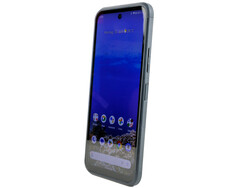 Testing the Nokia XR21. Test unit provided by HMD Global
Testing the Nokia XR21. Test unit provided by HMD Global
The Nokia XR21 doesn’t really want to be seen as a real rugged smartphone but more as a robust companion for everyday tasks. With its IP69K certification, shock proof construction, and wide range of operating temperatures, the smartphone from HMD Global can easily fulfill this aspiration. In addition, the manufacturer also includes two quick access keys for a total of four different actions on button press. The powerful 4,800-mAh battery also delivers a really good battery life.
The Nokia XR21 is a tough everyday companion with a potentially long life.
With the competitors, you will also look in vain for a similar expanded warranty of 36 months with an additional warranty on the display. The nominally long update periods is slightly marred by the fact that the XR21 is still delivered with Android 12, even though the XR20 predecessor has already received Android 13. The WLAN speed also turns out slightly slower than expected. On the other hand, you get full dual-SIM including eSIM support. Only the display could have been brighter.
With an even more modular design, the Gigaset GX6 presents itself as an alternative, and the Galaxy XCover 6 Pro is probably also an interesting choice.
Nokia XR21
–
06/21/2023 v7
Daniel Schmidt
Connectivity
48 / 70 → 69%
Games Performance
34 / 64 → 52%
Application Performance
72 / 86 → 84%
Smartphone – Weighted Average
More articles related to this device
Nokia XR21 (XR Series)
Transparency
The present review sample was made available to the author as a loan by the manufacturer or a shop for the purposes of review. The lender had no influence on this review, nor did the manufacturer receive a copy of this review before publication. There was no obligation to publish this review.

Editor of the original article: Daniel Schmidt – Managing Editor Mobile – 524 articles published on Notebookcheck since 2013
As a child I was fascinated by my Commodore 16, and this sparked my enthusiasm for computers. Using my first modem, I surfed the BTX videotext system and later the World Wide Web. I have always been captivated by the latest technologies, and this is especially true for mobile devices such as smartphones and tablets. I’ve been part of the Notebookcheck team since 2013 and have also on occasion written for Notebookinfo.de, and I’m looking forward to testing new innovations for our readers. I like to spend my spare time indulging in photography and barbecues and being with my family.

Translator: Mark Riege – Translator – 438 articles published on Notebookcheck since 2018
Having worked as a programmer for 20 years (medical devices, AI, data management systems), I’ve been following the computer scene for many years and especially enjoy finding out about new technology advances. Originally from Germany but living in the US, I’ve been working as a translator more recently, with Notebookcheck allowing me to combine my interest in new devices and translation. Other interests include Buddhism, spending time in Tibetan monasteries, and translating ancient Tibetan texts.
Daniel Schmidt, 2023-06-22 (Update: 2023-06-22)
>>> Read full article>>>
Copyright for syndicated content belongs to the linked Source : NotebookCheck – https://www.notebookcheck.net/Nokia-XR21-review-Robust-smartphone-for-everyday-tasks-with-IP69K-certification.727371.0.html































